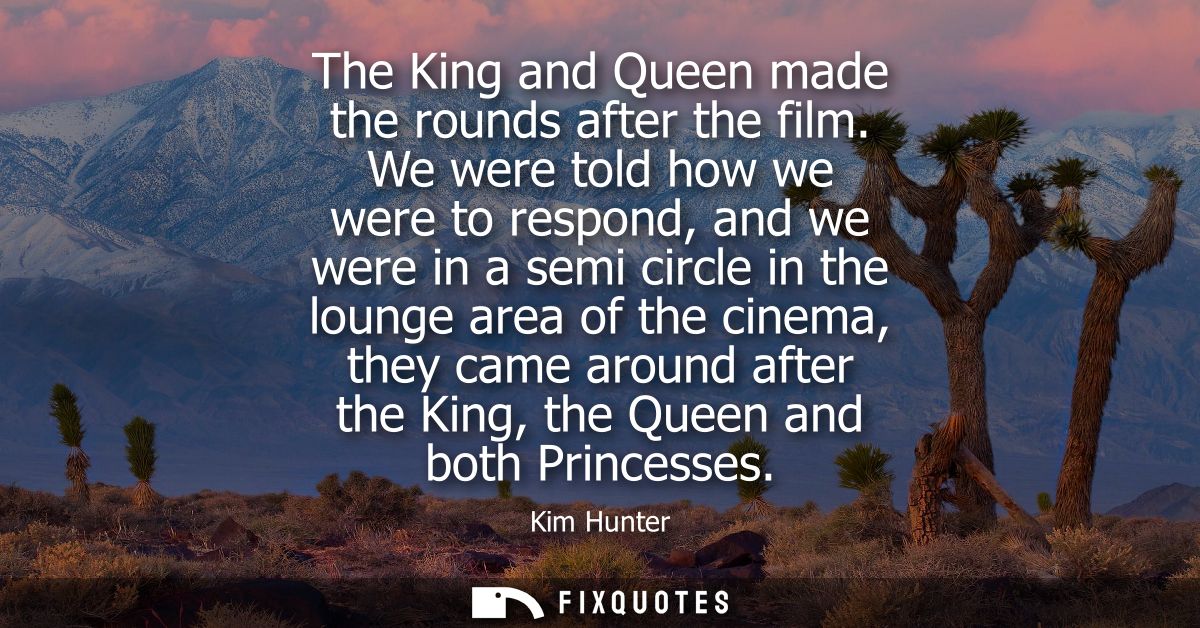"The King and Queen made the rounds after the film. We were told how we were to respond, and we were in a semi circle in the lounge area of the cinema, they came around after the King, the Queen and both Princesses"
About this Quote
Kim Hunter’s recollection evokes a vivid scene of formality and ceremony, one rooted in the traditions of meeting royalty. The film screening is more than an entertainment event; it becomes a stage for the manifestation of social hierarchy and etiquette. The statement that attendees were “told how we were to respond” suggests a carefully orchestrated event where spontaneity is secondary to protocol. This creates a sense of both reverence and nervousness: the guests, including Hunter, are not merely participants but actors in a prescribed ritual, their roles delineated by tradition and instruction.
Standing in a semi circle underscores the importance of presentation and deference. The lounge of the cinema is transformed from a place of relaxation to a symbolic court, the semi circle allowing for eye contact, visibility, and an ease of movement for the royal procession. The way the King and Queen “made the rounds” paints a picture of personal engagement, yet at a controlled, ceremonial distance. It highlights the duality of royalty’s public persona: at once intimate, giving the impression of connection, and yet inaccessible, buffered by the knowledge and ritual that separates their world from the rest.
Mentioning the order, King, Queen, both Princesses, emphasizes the hierarchical nature of the encounter. The sequence is steeped in significance, reinforcing ideas about primacy and the roles each royal must play. For Hunter, and presumably the others in attendance, these moments are both fleeting and highly charged, freighted with the weight of history and public expectation. Beneath the surface precision and order, there might linger a sense of awe, perhaps even discomfort, as individuals are placed within the framework of royal spectacle. The memory, years later, resonates as a testament to how ceremonial interactions shape personal experience and collective memory, blending ordinary settings with extraordinary encounters.
About the Author

